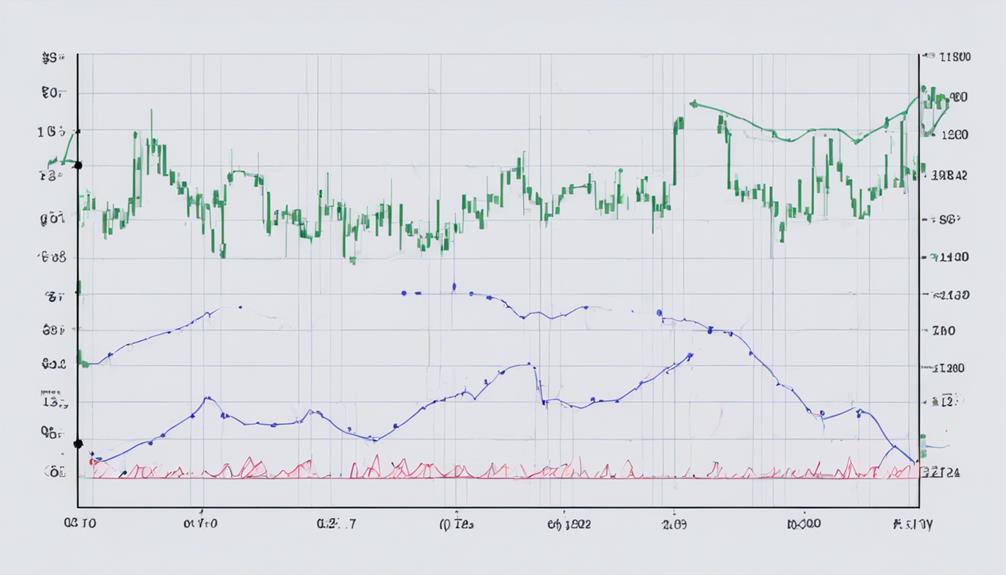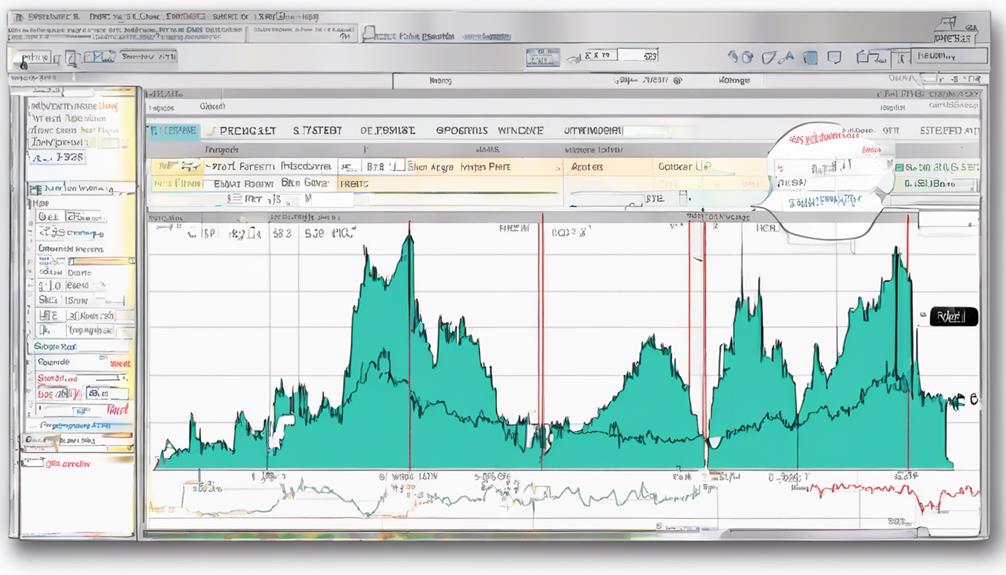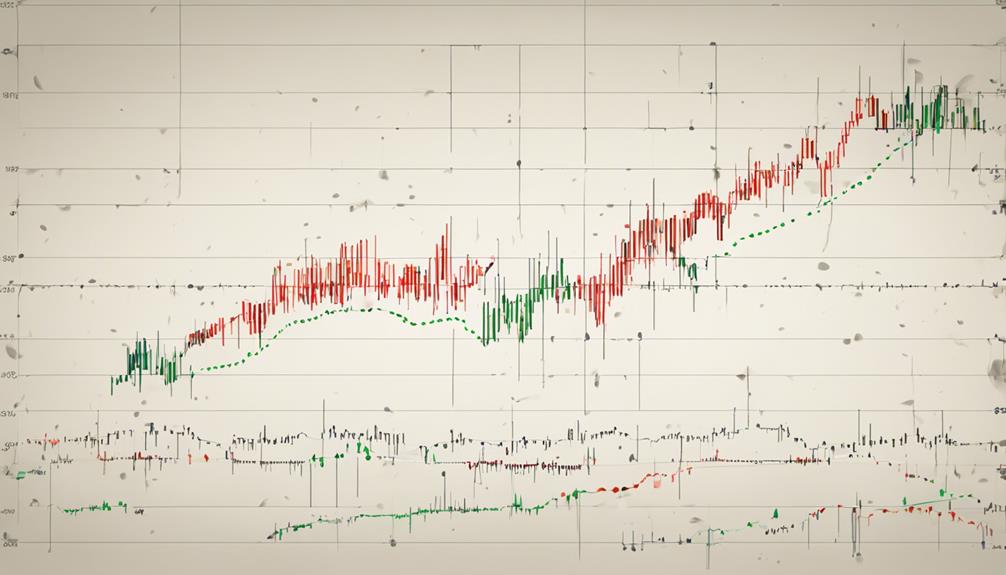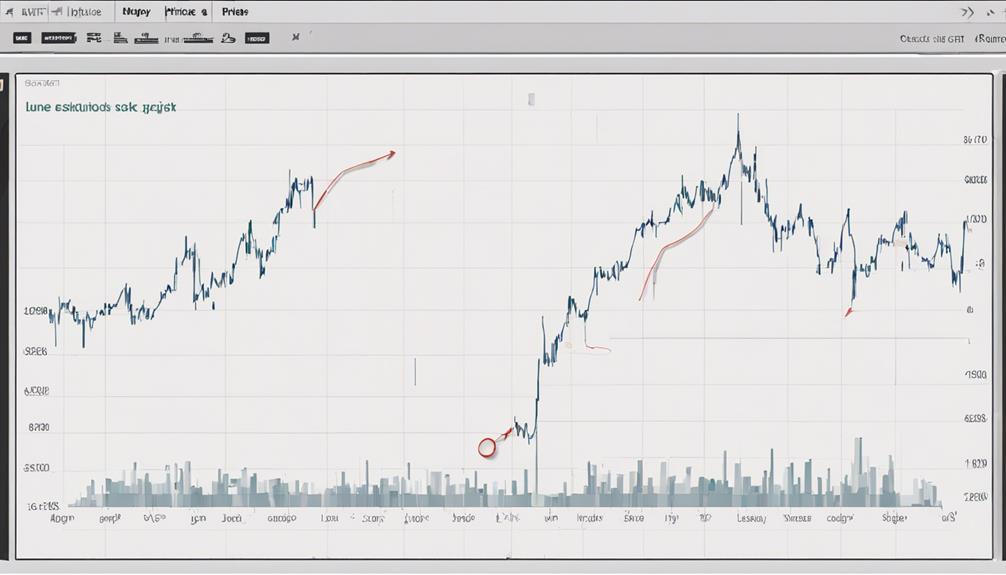The reflection of price oscillation by the Rate of Change (ROC) indicator presents a crucial aspect of market analysis. The intricate relationship between ROC and price movements unveils a dynamic interplay that extends beyond mere numerical calculations.
While the indicator's ability to gauge momentum shifts is widely acknowledged, the underlying mechanisms that drive this synchronization between ROC and price oscillation remain intriguing. Delving into the depths of this correlation unravels a compelling narrative of how market dynamics manifest through the lens of the ROC indicator, offering a profound insight into the complexities of price behavior and market trends.
Understanding ROC Indicator Price Movements
The analysis of price movements through the Rate of Change (ROC) indicator provides traders with valuable insights into the momentum and direction of market trends. ROC reflects the change in price over a specified number of periods, helping traders gauge the speed of price fluctuations.
Positive ROC values indicate an uptrend, while negative values signify a downtrend, allowing traders to assess the momentum of price swings. As price advances, ROC expands positively, and during declines, it deepens negatively, capturing the intensity of these movements.
The ROC indicator is a key technical tool in financial markets as it helps identify overbought and oversold conditions. By understanding how ROC reflects price oscillation, traders can better analyze market momentum and anticipate potential trend reversals based on the rate of price change.
This technical indicator provides a quantitative measure that aids traders in making informed decisions regarding market entry and exit points.
Relationship Between ROC and Price Fluctuations

Analyzing the relationship between the Rate of Change (ROC) indicator and price fluctuations provides traders with crucial insights into market trends and potential reversal points. ROC, as a momentum indicator, reflects price oscillation by measuring the percentage change in price over a specific period, indicating the speed of price movements.
By capturing the momentum behind price fluctuations, ROC helps traders identify overbought and oversold conditions in the market. This understanding is essential for making informed trading decisions as it offers insights into the strength and direction of price movements.
Furthermore, ROC's ability to detect market momentum shifts based on price fluctuations can assist traders in predicting potential reversal points. By recognizing these patterns, traders can anticipate market trends and adjust their strategies accordingly, enhancing their ability to navigate the uncertainties of price movements effectively.
ROC's reflection of price oscillation plays a pivotal role in deciphering market dynamics and facilitating strategic decision-making in the trading environment.
Factors Influencing ROC Reflecting Price Changes

Reflecting price changes, various influential factors impact the Rate of Change (ROC) indicator's ability to capture market dynamics effectively. The ROC's calculation methodology, based on percentage changes between current and past prices, helps in capturing the momentum of price movements.
Factors such as market volatility, sudden price shifts, and volume spikes play a crucial role in influencing ROC to reflect price changes accurately. Traders rely on the ROC's sensitivity to price fluctuations to identify trends, potential entry/exit points, and reversals in the market swiftly.
Due to its quick reaction to price movements, the ROC indicator is a valuable tool for analyzing short-term price oscillations. Understanding how external factors impact price changes is essential for traders to utilize the ROC effectively in capturing market dynamics and making well-informed decisions based on the captured momentum.
Impact of Market Conditions on ROC

Influencing the Rate of Change (ROC) indicator, market conditions play a significant role in shaping the dynamics of price oscillations.
- Volatile Markets Impact ROC: Market conditions characterized by high volatility often result in more significant price oscillations, which are duly reflected in the ROC values.
- Dynamic Response to Market Shifts: The ROC indicator reacts dynamically to changes in market conditions, effectively illustrating the impact of evolving circumstances on price momentum.
- Stabilized ROC in Calm Markets: During periods of market stability, ROC values tend to stabilize, indicating a reduction in price oscillation as market activity calms.
- Reflecting Ebb and Flow: ROC serves as a mirror to the ebb and flow of price movements within the market, adapting to varying levels of market activity and reflecting the changing conditions impacting price oscillation.
Exploring Price Oscillation Through ROC Indicator

In exploring the dynamics of price oscillation through the ROC indicator, one can observe how market conditions interact with price momentum to shape trading opportunities.
The Rate Of Change (ROC) indicator plays a crucial role in capturing price oscillation by measuring the percentage change in price over a specific period. It effectively highlights momentum shifts, indicating overbought and oversold conditions in the market.
By identifying price swings and trend reversals, ROC offers valuable insights into market volatility and helps traders pinpoint potential entry/exit points. Understanding price oscillation through ROC enables a deeper assessment of market dynamics, providing clarity on the strength and direction of price movements.
This reflection of price oscillation assists traders in making informed decisions based on the momentum and rate of change in security prices, ultimately enhancing their ability to navigate the market with precision and confidence.
Can the ROC Indicator Help Predict Price Oscillation in the Market?
When it comes to decoding ROC indicator market trends, traders often look to this tool to help predict price oscillations. By analyzing the Rate of Change indicator, investors can gain insight into potential market movements and make more informed trading decisions.
Frequently Asked Questions
What Does the ROC Indicator Tell You?
The ROC indicator provides insights into price momentum by measuring the rate of change over a specific period. Positive values signal price increases, while negative values indicate declines. Traders use ROC to identify market trends and potential reversal points.
Is ROC an Oscillator?
Yes, the Rate of Change (ROC) indicator is recognized as an oscillator in technical analysis. ROC oscillates above and below the zero line, aiding in the assessment of price momentum and direction. Traders leverage ROC to identify overbought and oversold market conditions.
What Is the Difference Between ROC and Momentum Indicator?
The difference between ROC and Momentum indicator lies in their calculation methods and sensitivity to price changes. ROC focuses on percentage differences in prices, making it a more reactive momentum oscillator compared to Momentum indicator.
Which Indicator Displays Price Movement?
The indicator that displays price movement is the Rate of Change (ROC). It calculates the percentage change in price over a specific number of periods, comparing the current price to that of a defined past period.
Conclusion
In conclusion, the Rate of Change (ROC) indicator serves as a valuable tool for understanding price oscillation in the market. By measuring the percentage change of a security price relative to previous periods, ROC helps identify potential reversal points and momentum shifts.
Just as a compass guides a traveler through shifting terrain, ROC navigates traders and investors through the dynamic landscape of price movements, providing insights into market trends and aiding in informed decision-making.
